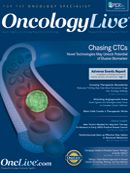Publication
Article
Oncology Live®
Integrated Care Model Emerges for Oncologic Emergencies
Author(s):
The treatment of cancer is complex, and what might seem like a relatively minor medical issue at first can quickly escalate into an emergency.
Thomas Terndrup, MD
The treatment of cancer is complex, and what might seem like a relatively minor medical issue at first can quickly escalate into an emergency.
In September, The Ohio State University Comprehensive Cancer Center, collaborating with the Department of Emergency Medicine, opened a fully integrated cancer emergency department at the new James Cancer Hospital to care for patients who develop emergencies caused by their cancers.
Oncologic emergencies include pulmonary embolisms, treatment-associated infections, tumor lysis syndrome, surgical problems such as bowel or kidney obstruction, or pain and weakness due to brain tumors or spine metastases. With growing numbers of patients and survivors, the demand for such services will only expand in the coming years, highlighting the need for care teams to be well-equipped to recognize oncologic emergencies and deploy the right interventions.
To gain insight into these matters, OncologyLive interviewed Thomas E. Terndrup, MD, chair of the Department of Emergency Medicine at The Ohio State University Wexner Medical Center.
What is the cancer emergency department? Why is such a department important?
The James Emergency Department is a 15-bed unit on the first floor of our cancer critical care tower at the James Cancer Hospital. Cancer patients need specialized, individualized care.
We want to provide that throughout the James Cancer Hospital, including the emergency service interval. We aim to gather all the individuals who provide care to our patients, so that they have a common understanding of our collaborative approach in these challenges. We also aim to protect patients from infectious diseases.
What are some of the processes in place to expedite the cancer treatment process?
Before a cancer patient actually arrives in the emergency department, our oncologists and practitioners can electronically transmit a notification that a patient is arriving. This notification allows us to be better prepared when the patient arrives, understanding the expectations of the emergency encounter, and expedite his or her care.
What changes are on the horizon?
We want to continuously improve. Our goal is to learn from the experiences of yesterday and to incorporate those findings into even better care and treatment for our patients with cancer.
In a learning organization, that’s what you do every day. For example, we feel that emergency patients would be more comfortable in lounge chairs as opposed to on stretchers. Stretchers aren’t built for comfort, they are built for mobility. When we have an appropriate patient, eg, someone who needs an infusion for a few hours, we can use a modified lounge chair.
What is the cost of these emergency services for insurance providers?
I am a physician, so I focus primarily on providing correct and efficient care. Our duty is to provide the best care possible to everybody who needs emergency services. I am pleased that individuals who are newly insured through the Affordable Care Act have access to our care and emergency services. We’d also like to see them better lined up with primary care providers, but we are encouraged by early results.
What is the role of the cancer emergency department in clinical trials?
We now have ongoing clinical trials in our emergency department, and the number of these trials will very likely increase. Our specialty society, the Society for Academic Emergency Medicine, is creating a new workgroup focused on oncology emergencies, and additional clinical trials that will take place in this space. We are very excited about our ability to provide our patients the opportunity to participate in clinical trials. We will be collaborating extensively with our oncology and other disciplinary colleagues on these studies.
Are there other emergency departments like this in the country?
There are some. We visited the University of Texas MD Anderson Cancer Center about a year ago.
The people there were very accommodating and allowed us to develop some insight in the design of our unit. Here at the James, we continue to think of ourselves as the first fully integrated cancer emergency department in the country.
We accept patients of all types—not just those with cancer conditions—in a fully integrated way.
How is the cancer emergency department performing so far?
The emergency department opened on August 3, and it has gone exceedingly well. We are seeing lots of patients and are doing our best to provide all the services that patients need. Whenever there were very busy days (high volumes and really sick people), some patients may have waited before being evaluated by a team member— but we are making better use of that waiting time by ensuring the evaluation and treatment begins as soon as possible after that assessment.
This includes getting patients registered into the system, ordering an x-ray, giving pain medication, and so on. This added value extends even further for patients with cancer. In the example of a patient who is neutropenic in response to chemotherapy, these vulnerable patients are isolated in another part of the emergency department, creating the concept of a no-wait waiting room.









